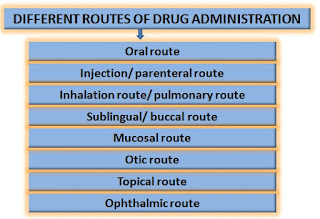The parenteral route of administration provides numerous advantages, such as improved bioavailability, avoidance of the first-pass metabolism, and reliable dosing, however, it also has some limitations. Let’s check them.
Medicines are more effective when they reach the site. Different routes are used to deliver the active pharmaceutical ingredient (API) to the patient and the route used depends on the site of action and the patient's compliance. The parenteral route of drug administration is commonly used by doctors to treat patients, generally, this means directly related to injecting into the body. As compared to oral administration it has control over the rate and dose of the medication, thus generating more predictive pharmacokinetic and pharmacodynamic profiles.
The parenteral medications have four routes such as intravenous (in a vein), intramuscular (in a muscle), subcutaneous (under the skin), intradermal (under the epidermis), and each has needs administer properly by the specific skill.
Advantages of the parenteral route of drug administration:
- The major advantage of the parenteral route of drug administration is that it can provide a rapid onset of action and rapid absorption of the drug.
- The parenteral route is suitable for those drugs that are poor absorption in the GIT, not orally effective or are destroyed by digestive secretions.
- Compared to other routes, it provides precise and accurate dosage.
- It requires a low amount of drugs as compared with solid/liquid oral dosage form (tablets, capsules, powders, caplets, solution, emulsion, and suspension).
- It has faster and more predictable bioavailability.
- It has no risk of degradation of the drug by the digestive system as it bypasses the digestive tract through the injection.
- It is suitable for the unconscious, uncooperative patient as compared to other routes.
- There is no issue with the drugs having an unpleasant taste, odor, and color since it directly injected using a syringe and needle.
Disadvantages of the parenteral route of drug administration:
- The major disadvantage of the parenteral route of drug administration is that it is used for the rapid onset of action, not used for sustained, prolonged, and extended-release of the drug.
- The formulation, manufacture, and packaging of parenteral dosage forms are more expensive than other routes.
- Pain on injection is inevitable, so elderly and child patients avoid taking.
- When proper precautions are not taken, it can cause infection and tissue damage.
- Not all parenteral routes are self-administered, requiring trained personnel for administration.
- Only soluble drugs are possible to formulate in parenteral medication.
Commonly asked questions on the route of drug administration are as follows.
Which method of administering drugs is the most rapid-acting?
The intravenous (IV) route is the precise and controlled way of medication that provides the rapid action of the drug.
What are the different routes of drug administration?
The buccal route, inhalation route, nasal route, ocular route, oral route, otic route, rectal route, sublingual route, transdermal route, and vaginal route are some of the major routes of drug administration that are commonly used.
How is the route of administration of medication determined?
The different routes are usually classified by the site to which the medication is applied or where the action is aimed.
References:
- Kwatra, S., Taneja, G. and Nasa, N. (2012). Alternative Routes of Drug Administration- Transdermal, Pulmonary & Parenteral. Indo Global Journal of Pharmaceutical Sciences, 2(4): 409-426
- "The Administration of Medicines". Nursing Practice Clinical Zones: Prescribing. NursingTimes.net. 2007. Archived from the original on January 2, 2020. Retrieved April 2, 2013.
- Raj, G. and Raveendran, R. (2019). Introduction to Basics of Pharmacology and Toxicology Volume 1: General and Molecular Pharmacology: Principles of Drug Action. Springer Nature Singapore Pte Ltd.
You may also like this
